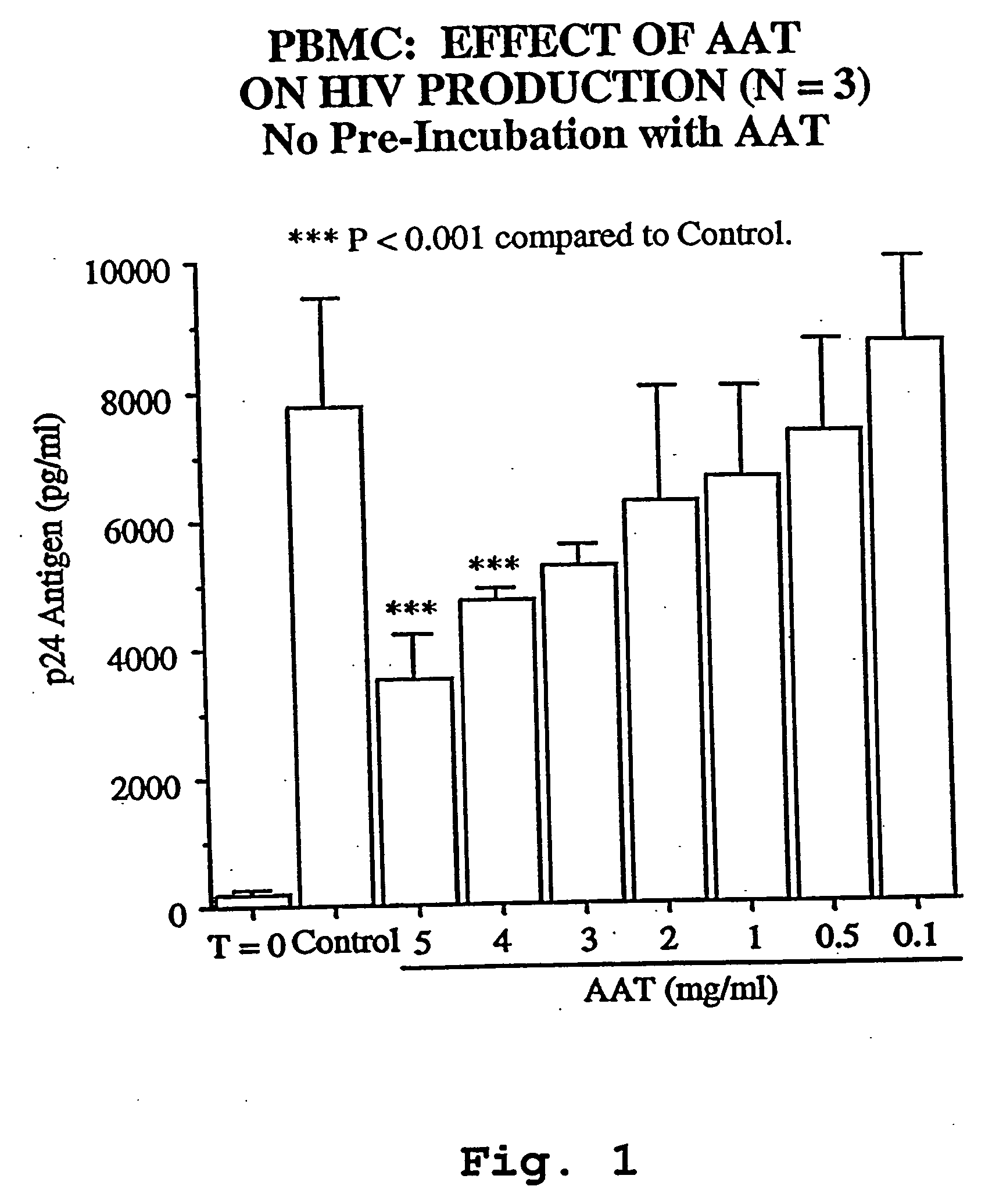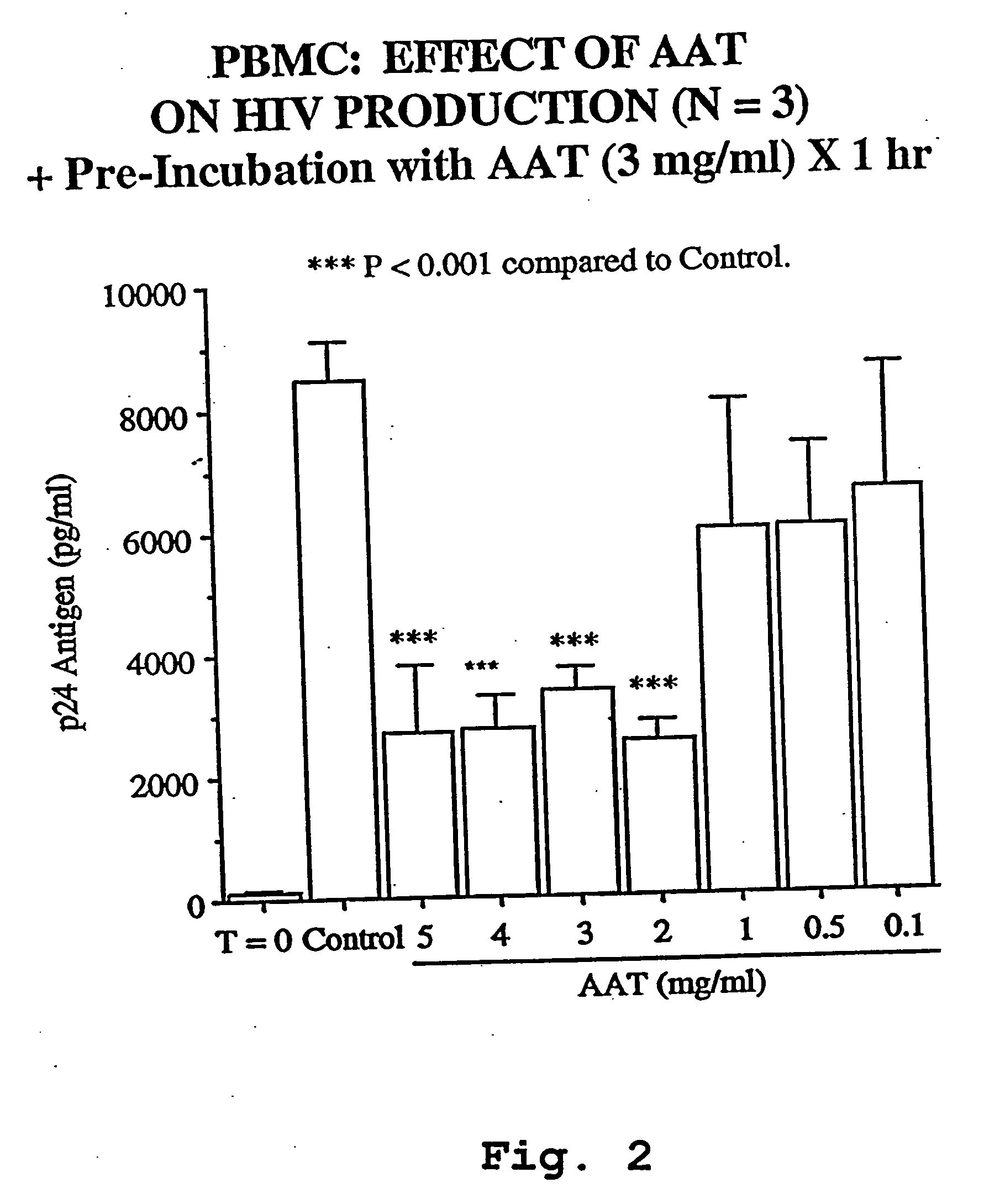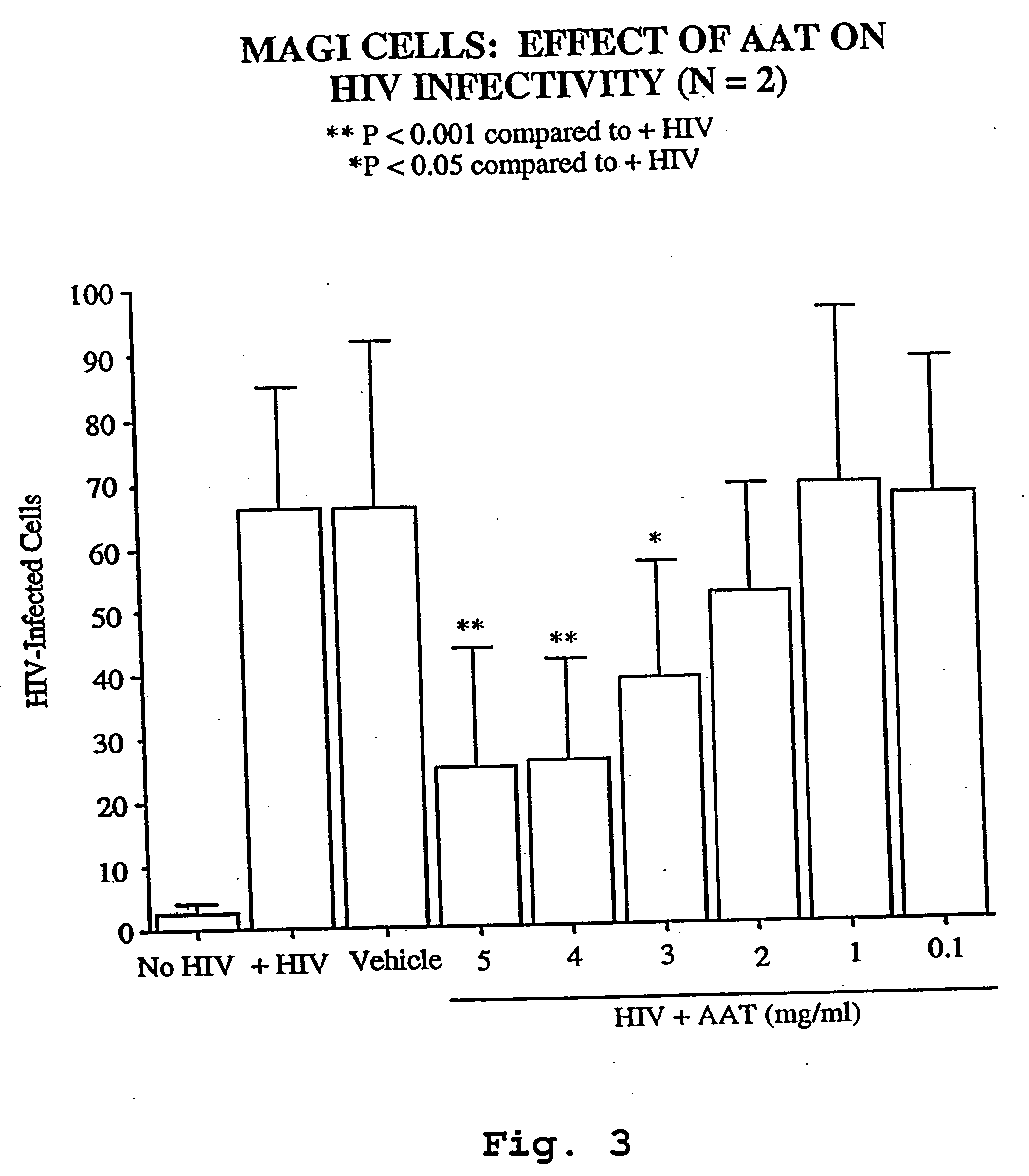Inhibitors of serine protease activity and their use in methods and compositions for treatment of bacterial infections
a serine protease and inhibitor technology, applied in the direction of antibacterial agents, peptide sources, peptide/protein ingredients, etc., can solve the problems of increased elastin degradation, elastic tissue destruction, and serious pathological conditions or disease states, so as to increase the mean p24 antigen production, increase the p24 antigen production, and increase the effect of p24 antigen production
- Summary
- Abstract
- Description
- Claims
- Application Information
AI Technical Summary
Benefits of technology
Problems solved by technology
Method used
Image
Examples
example 1
General Procedure and Materials
[0094] Alpha-1-antitrypsin (AAT) used in these studies is purified from the blood of healthy volunteers. AAT is purified to single-band homogeneity. The AAT protein is diafiltered into a diluent consisting of NaCl, sodium phosphate, pH 7.05. The AAT preparations are maintained at stock concentrations of 14-50 mg / ml and stored at −70° C. until added to cultures. As a control AAT preparation that is different from the composition of the invention a commercially available Prolastin (Bayer's AAT) is used. Recombinant human interleukin (IL)-18 is obtained from Vertex Pharmaceuticals Inc., (Cambridge, Mass.). IL-6 and tumor necrosis factor (TNF) are obtained from R & D Systems, Minneapolis, Minn., endotoxin-free NaCl, and endotoxin (lipopolysaccharide, LPS) is obtained from Sigma (St. Louis, Mo.).
[0095] Medium for monocytic U1 cell and MAGI-CCR5 cell cultures consists of RPMI 1640 medium purchased from Mediatech (Hermdon, Va.) containing 2.5 mM L-glutamine...
example 2
Anti-HIV Effect of AAT
AAT Inhibits Production of HIV-1 in U1 Cell Cultures.
[0102] The U1 cell line is derived from human monocytic U937 cells into which 2 copies of HIV-1 provirus are incorporated into host genome. Exposing U1 cells to pro-inflammatory cytokines such as IL-18, IL-1, IL-6 and TNF, phorbol esters or hyperosmolarity results in the induction of HIV-1 as assessed by p24 antigen. Stimulation of U1 cells with 0.5 nM IL-18 induced large amounts of p24 antigen after 48 hr of incubation in 3 separate experiments. U1 cells cultured in medium alone (control) contained a mean of 41.3±11.5 pg / ml p24 antigen, which is increased 150-fold to 6,235±1,775 pg / ml p24 following stimulation with IL-18. Cultures conducted in the presence of AAT added 1 hour prior to the addition of IL-18 demonstrated a dose-dependent reduction in p24, with near ablation of IL-18-induced p24 observed at 3 mg / ml AAT. AAT added at 0.1, 0.5, 1, 2 and 3 mg / ml resulted in 6,879±207, 3,687±968, 2,029±625, 452±...
example 3
Failure of Commercial AAT Preparation (Prolastin) to Inhibit HIV
[0112] Prolastin used as a control preparation of AAT in the experimental setting that is similar to those described above. Surprisingly, this preparation fails to display anti-HIV activity at doses that are comparable to the composition of the invention (FIG. 6). The lack of the activity cannot be explained by low levels of active AAT since Prolastin contains only about 8% of inactive form of total antitrypsin (Lomas D A, Elliott P R, Carrell R W. Commercial plasma alpha1-antitrypsin (Prolastin) contains a conformationally inactive, latent component. Eur Respir J March 1997;10(3):672-5). The biological significance of this observation is unknown. However, this means that not every AAT composition is inherently antivirally active, which may explain why prior to this invention others failed to discover the anti-HIV activity of AAT. Upon this unexpected observation a series of tests are carried out to further investigate...
PUM
| Property | Measurement | Unit |
|---|---|---|
| concentration | aaaaa | aaaaa |
| molar concentrations | aaaaa | aaaaa |
| concentrations | aaaaa | aaaaa |
Abstract
Description
Claims
Application Information
 Login to View More
Login to View More - R&D
- Intellectual Property
- Life Sciences
- Materials
- Tech Scout
- Unparalleled Data Quality
- Higher Quality Content
- 60% Fewer Hallucinations
Browse by: Latest US Patents, China's latest patents, Technical Efficacy Thesaurus, Application Domain, Technology Topic, Popular Technical Reports.
© 2025 PatSnap. All rights reserved.Legal|Privacy policy|Modern Slavery Act Transparency Statement|Sitemap|About US| Contact US: help@patsnap.com



